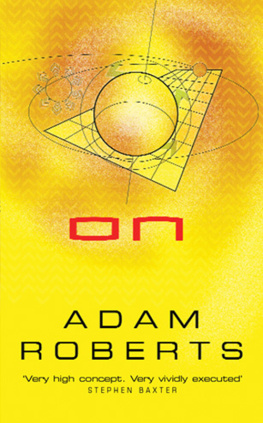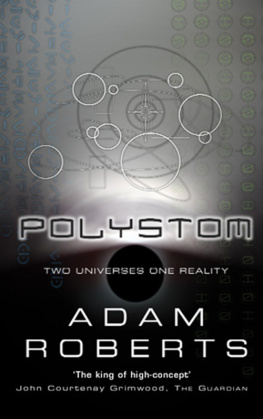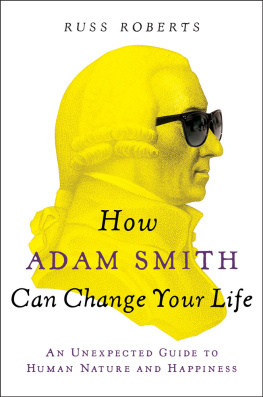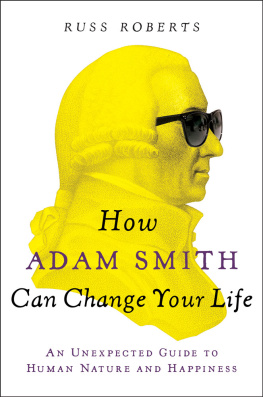Adam Roberts - On
Here you can read online Adam Roberts - On full text of the book (entire story) in english for free. Download pdf and epub, get meaning, cover and reviews about this ebook. year: 2002, publisher: Gollancz, genre: Detective and thriller. Description of the work, (preface) as well as reviews are available. Best literature library LitArk.com created for fans of good reading and offers a wide selection of genres:
Romance novel
Science fiction
Adventure
Detective
Science
History
Home and family
Prose
Art
Politics
Computer
Non-fiction
Religion
Business
Children
Humor
Choose a favorite category and find really read worthwhile books. Enjoy immersion in the world of imagination, feel the emotions of the characters or learn something new for yourself, make an fascinating discovery.
- Book:On
- Author:
- Publisher:Gollancz
- Genre:
- Year:2002
- Rating:3 / 5
- Favourites:Add to favourites
- Your mark:
- 60
- 1
- 2
- 3
- 4
- 5
On : summary, description and annotation
We offer to read an annotation, description, summary or preface (depends on what the author of the book "On " wrote himself). If you haven't found the necessary information about the book — write in the comments, we will try to find it.
Adam Roberts: author's other books
Who wrote On ? Find out the surname, the name of the author of the book and a list of all author's works by series.
On — read online for free the complete book (whole text) full work
Below is the text of the book, divided by pages. System saving the place of the last page read, allows you to conveniently read the book "On " online for free, without having to search again every time where you left off. Put a bookmark, and you can go to the page where you finished reading at any time.
Font size:
Interval:
Bookmark:
I would like to thank Simon Spanton, for excellent editorial and other advice; Malcolm Edwards, Oisin Murphy-Lawless, Steve Calcutt, Rachel Cummings, Abraham Kawa, Tony Atkins, Julie Roberts, David Harris, Bob Eaglestone, Roger Levy, Cathy Preece and Sarah Kennedy. For advice on gravitational matters, Id like to thank the workers at the Gravitational Institute of Staines, particularly Robert Ayamanski and Francesca Frenacapan.
This is a book about precariousness, and it necessarily reflects the precariousness of my life during the last years of the last millennium; but none of the people listed here bears any responsibility for that.
This book is for R.
Tighe, falling from his village ledge, fell more slowly than a sky-diver would in the present world for this reason; although such falls will nevertheless, of course, usually be fatal.
The Physics of the Worldwall
1.1. The Worldwall. Gravity, which operates in the universe as a whole at 90 to a body of mass (such as a planet), has on this particular world been twisted by Hawkings over-efficient experiments. Instead of operating perpendicular to the flat of ground, gravity is operating parallel to it, in a spherical standing-wave vortex extending from the notional centre-point of the planet to a circular plane less than a kilometre beyond the surface of the globe. This vortex draws energy through superstring elasticity from surrounding space-time and has currently lasted some 430 standard years.
The dynamics of the change are difficult to theorise clearly. Of the underlying principles of gravity (that it be always additive, always infinite in range, and always attractive) the first two are unaltered by the shift; were gravity, notionally, to shift through more than 90 clearly the last would be violated. Any shift of less than 90 lacks quantum stability. The gyroscopic rotational realignment alters the equations trivially, but it otherwise satisfies physical necessity.
1.2. Equations. The standard equations for gravitational attraction have usually taken for granted the linear, lagrangian properties of the gravitational effect, such that each particle exerts line-of-sight pull on every other. In fact, equations contain a blind element that eliminates the torque effect of superenergetic quantum foam. Accordingly, for a spherical body of mass M and radius R, containing N molecules each of molecular weight A, the Newtonian gravitational binding effect of energy Eg will be as follows:

where  is the necessary alignment of the vector of attraction.
is the necessary alignment of the vector of attraction.
Theorists from Podkletnov onwards had postulated localised gravitational instabilities, particularly with reference to certain condensate attributes; and these states were always directly related to the linear part of the gravitational lagrangian L. This in turn involves the very small negative intrinsic cosmological constant of space-time. The older definition of critical regions as those where 2() >||/8hG, applied prior to the uncovering of over-efficient power sources that drew their energy in a more direct way from quantum foam.
Gravitational theory had, similarly, long known of certain unstable modes of the classic Einstein space-time dynamic, named zero modes, which have the same probability to occur as the h=0 configuration (flat space) and a higher probability than all other field configurations. (The probability is proportional to exp(iS[g]/hPlanck), and for the zero-modes one has S=0). Thus a gravitational field would always embody a certain instability towards these configurations. What prevents this in the general bulk of space-time is a certain intrinsic cosmological term LCosm.(2)=+||/h2, favouring an h=0 configuration.
The coherent coupling LCoherent(2)=2h2 of the gravitational field to any atomic-molecular aggregation, for instance a central node of mass, always amounts to a local positive cosmological term (which is to say, gravity must be an attractive rather than a repulsive force). This cancels the intrinsic stabilising term LCosm.(2) and leads to a local instability.
Therefore, while the regular coupling of gravity to incoherent matter produces a response a gravitational field approximately proportional to the strength Tcont of the source, the coherent coupling induces an instability of the field.
Things go as if a potential well for the field were suddenly opened. The field runs away towards those configurations which are now preferred (although whether this is compatible with the cosmic energetic balance remains moot). The runaway stops at some finite strength of the field, where higher order terms in the lagrangian, which usually can be disregarded, come into play. This duration of this condition is difficult to determine because it depends mainly on the non-perturbative dynamics of the field, and very little on the initial conditions.
1.3. Doomsday Possibilities. There are two opinions as to what will happen; one is that this gravitational disturbance will exhaust itself within (estimates vary) fifty to five hundred years and gravity will revert to normal. The other is that it will distort superstring alignment in a chain-reaction, interrupting and perverting the universal gravitational constant. This doomsday scenario sees the situation of the worldwall as cosmically fatal, with the actual weave of space-time disintegrating over a period of some hundred thousand years, the unravelling beginning at this world but spreading logarithmically throughout the galaxy and possibly further. Should this happen, the basis not only of gravitational attraction, but of atomic coherence, could disintegrate, and the universe as a whole reduce to a sort of chaotic sub-particle soup extremely attenuated through the expanse of remaining space. The greatest danger posed by this eventuality is that it would disrupt the balance offerees maintaining the singularities beneath the event horizons of black holes. Arguably, a shift in the vector  would release enormous amounts of stored energy from black holes, with devastating effects.
would release enormous amounts of stored energy from black holes, with devastating effects.
It is unclear which of these two hypotheses is the more likely.
The effect of this shift in the coefficient and alignment of gravity has been to angle the vector of living through 90. Instead of operating, as it were, from the sky to the ground, gravity on this world now operates from the west to the east, turning the entire world on end and replacing what had been an endless flat plain (punctuated with mountains and valleys) into an endless vertical wall (punctuated with ledges and crevices). West is now up, and East is down.
2.1. The Pause. At the surface of the world (or worldwall) gravity is running parallel with wall, rather than conventionally at right angles as is normal. As yet, however, gravity is operating normally in the rest of the universe such that, for instance, the world continues to orbit around the sun. There is accordingly a place where the horizontal gravity stops, and the usual gravitational laws reassert themselves. This boundary is known to the inhabitants of the worldwall as the Pause. This barrier, although theoretically navigable simply by pushing through it, in effect creates a seal on the atmosphere of the world. This has significantly raised the air density and pressure between the world and the Pause (something of which the inhabitants of the world are, of course, unaware).
Font size:
Interval:
Bookmark:
Similar books «On »
Look at similar books to On . We have selected literature similar in name and meaning in the hope of providing readers with more options to find new, interesting, not yet read works.
Discussion, reviews of the book On and just readers' own opinions. Leave your comments, write what you think about the work, its meaning or the main characters. Specify what exactly you liked and what you didn't like, and why you think so.









